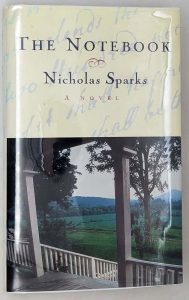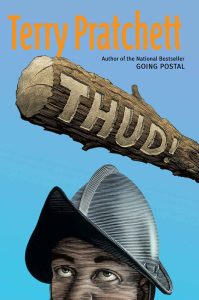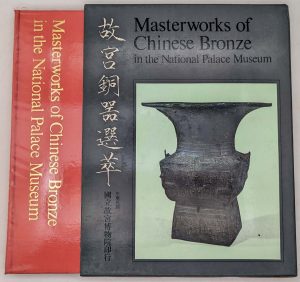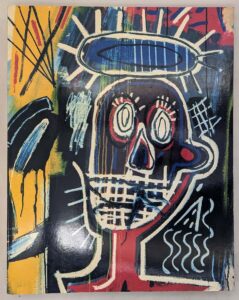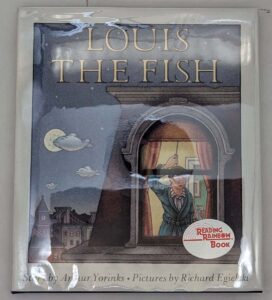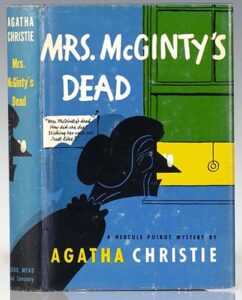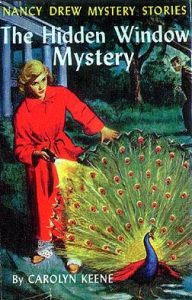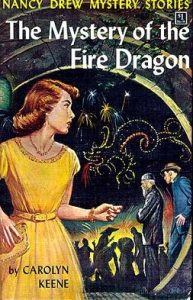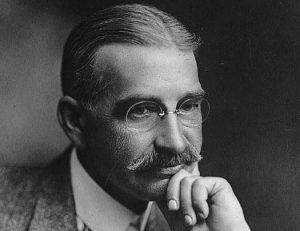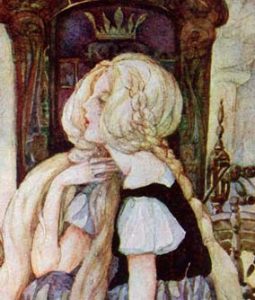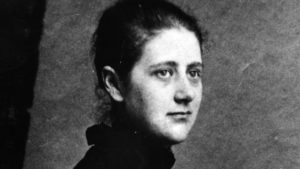Dorothy and the Wizard in Oz is the fourth book set in the Land of Oz written by L. Frank Baum and illustrated by John R. Neill. It was published on June 18, 1908 and reunites Dorothy Gale with the humbug Wizard from The Wonderful Wizard of Oz (1900). This is one of only two of the original fourteen Oz books (the other being The Emerald City of Oz (1910), to be illustrated with watercolor paintings.
Four years passed between the first and second Oz books (1900-4), and three between the second and third (1904-7). By 1907, however, it was clear to Baum and to his publisher, Reilly & Britton, that the Oz books were more popular and sold better than any of Baum’s other works. After 1907’s Ozma of Oz, Baum devoted more of his energies to Oz. A 1906 contract between Baum and his publisher called for new Oz books at two-year intervals between 1907 and 1911.
Summary
Dorothy Gale is gladly joining her Uncle Henry in California to visit relatives who live at Hugson’s Ranch, after their vacation from Australia in Ozma of Oz. Dorothy meets Hugson’s nephew who is her second cousin, Zeb of Hugson’s Ranch. Dorothy, Eureka (her cat) and Zeb are riding a buggy being pulled by a cab-horse named Jim when a violent earthquake strikes. A crevice opens in the ground beneath them and they fall deep into the Earth.
Dorothy, Eureka, Jim, Zeb, and the buggy land in the underground Land of the Mangaboos, a race of vegetable people who grow on vines. The Mangaboos accuse them of causing the earthquake, which has damaged many of their glass buildings. Just as they are about to be sentenced to death by the Mangaboos, a hot air balloon descends, and in the basket is the former Wizard of Oz, whom Dorothy last saw as he floated away into the sky from the Emerald City at the end of the earlier book The Wizard of Oz.
The Wizard demonstrates his (humbug) magic powers in a contest with the Mangaboo Sorcerer, first, by “conjuring” nine tiny, mouse-sized piglets (actually taking them from his pocket by sleight-of-hand), and then, by lighting a fire, which is a phenomenon unknown to the Mangaboos. The Sorcerer threatens the Wizard, who responds by cutting him in two, revealing his vegetable nature. The Mangaboo prince gives the Wizard a temporary job as court wizard, but the death sentence is only postponed until a new, native Mangaboo Sorcerer grows ripe enough to serve. Eureka asks for permission to eat one of the piglets, but the Wizard angrily refuses to allow this. The Mangaboo people eventually drive the travelers out of their country into a dark tunnel, which leads to another kingdom.
They pass through the tunnel into a beautiful green valley. They enter a seemingly empty cottage and are welcomed by invisible people, for they have entered the Valley of Voe, whose inhabitants are able to remain invisible by eating a magic fruit, and use their invisibility to hide from marauding bears. In order to avoid being eaten by the bears, the travelers move on.
The companions climb Pyramid Mountain, and meet the Braided Man, a manufacturer of holes, flutters (guaranteed to make any flag flutter on a windless day), and rustles for silk dresses. After exchanging gifts with him, the travelers continue upwards into the Land of the Gargoyles, where everything is made of wood, including the gargoyles, which are hostile, silent, flying monsters. The travelers are able, at first, to repel their attack successfully because the Gargoyles are frightened by loud noises. However, the travelers are soon out of breath and unable to make more noise, so the Gargoyles capture them. After recuperating from the fight, the travelers manage to escape, and enter another tunnel.
After a close encounter with a family of baby dragons, they find themselves trapped in a cave with no exit. The Wizard, Zeb, and the animals all fear that they will die of thirst, but Dorothy reveals that she has an arrangement with Princess Ozma: each day at four o’clock, Ozma uses her magic picture to see what Dorothy is doing, and if Dorothy gives a certain visual hand-signal, Ozma will use her magic belt to transport Dorothy out of danger to the Emerald City. In this way, the travelers are rescued.
Soon after renewing his acquaintance with the Emerald City staff and making the acquaintance of Ozma and her courtiers, the Wizard elects to remain in Oz permanently, planning to learn real magic from Glinda the good witch. He demonstrates his piglet-trick in a magic show, and gives one of the piglets to Ozma as a pet. The others stay for an extended visit, whose highlights include a race between the wooden Saw-Horse and Jim, which the Sawhorse wins. Eureka is accused of eating Ozma’s pet piglet. In fact, Eureka is innocent and the piglet is alive and well, but the obstinate Eureka enjoys being the center of the court’s attention, and does not try to prove her innocence until the trial is over. After the piglet is returned to Ozma, and Zeb and Jim decide they’ve had enough of fairyland. Ozma then uses the Magic Belt to send Dorothy and Eureka back to Kansas, and Zeb and Jim back to California.
Frank Baum – Dorothy and the Wizard in Oz | First Edition Identification Guide
Please refer to the gallery for detailed images of binding(s) and dust jackets.
| Year | Title | Publisher | First edition/printing identification points |
|---|---|---|---|
| 1908 | Dorothy and the Wizard in Oz | Reilly & Britton Co., [1908] | First edition. Illustrated by John R. Neill, 256 pages. Three states, priority as listed: - 1 - Textual points: The publisher’s advertisement on the verso of the half-title page lists three books: The Land of Oz, Ozma of Oz, and John Dough and the Cherub. The ownership page shows a picture of Dorothy and the final illustration in the book (page [257]) is a drawing of Ozma, with the words “The End”. The book is made up of 16- page gatherings except for the last which contains 20 pages. Inserted pictorial endpapers in black and yellow. Color plates: 16 full-color inserts, tipped in facing the title page and pages 16, 34, 50, 60, 80, 100, 122, 138, 146, 164, 192, 210, 220, 244, 252. Captions in black. (The color plates are figured into the pagination of the book.) Binding: light-blue cloth. On the front is a pictorial paper label in colors; the figures and the lettering are set against a metallic-gold background. The spine is lettered in black with a picture of the Tin Woodman in black and silver. The publisher’s name appears at the foot “The Reilly & | Britton Co.” in large and small capital letters. SECONDARY BINDING: Before the original sheets were exhausted, a new binding case was used with a shorter spine imprint “Reilly & | Britton”. Dust jacket: Issued in a full-color dust jacket with an illustration on the front which reproduces the label design. The back panel reproduces the publisher’s advertisement on the verso of the half-title page. The front and rear flaps are blank. Size of leaf. 9 by 6 3/4 inches. Thickness of volume'. 1 inch. Reilly & Britton also produced a Canadian issue which was published probably simultaneously with the first American state. This variant has the imprint of the Copp, Clark Co., Limited, of Toronto on the title page and horizontal rules at the foot of the spine rather than the publisher’s name; copies have been seen with double or with triple spine rules. - 2 - Because several changes were made in the cover and color plates, a number of variant copies of #2 were created. Apparently the changes in individual components were made before existing supplies were exhausted. The following combinations have been observed and are listed here in logical order. A) Same as the first state except that the book contains an advertisement listing titles through The Emerald City of Oz. The spine imprints reads: “Reilly & I Britton”.B) Same as variant A except that the plates have no captions and the spine is stamped only in black. C) Same as variant B except that the pictorial paper label on the front cover has a yellow background rather than gold and the spine imprint has been reset “REILLY & | BRITTON”. This variant appeared about 1915.
About 1916, presumably to cut production costs, Reilly & Britton published a re-imposed version of Dorothy and the Wizard in Oz. By deleting two leaves and re-imposing the printing plates, the format of the book was adjusted so that the final gathering required only 16 pages rather than the irregular 20 pages of earlier printings. The deletions were the half- title, the publisher’s advertisement that appeared on the verso of the half-title, and the picture of Ozma at the end of the book. At the same time the ownership-page drawing first used in Rinkitink in Oz (1916), showing a group of children reading a book, was substituted for the original one. The book still contains the 16 color plates, without captions. All copies seen of the re-imposed book have black-and-white endpapers, and the pictorial label on the front cover is printed with a yellow background rather than metallic gold; the spine imprint has again been reset “Reilly & | Britton”. A late form of this state is known which is in every way identical, including the Reilly & Britton title page, except that the spine imprint reads: “Reilly | & Lee”. Copies have been seen in very light blue and light blue-green cloth. Subsequent printings of Dorothy and the Wizard in Oz carry the Reilly & Lee imprint on the title page. Copies have been seen with advertisements listing titles through The Magic of Oz (1919), Glinda of Oz (1920), and The Hungry Tiger of Oz (1926); others have no advertisements. Some of the 1920 copies and all subsequent color-plate printings have new, reset captions in blue on the color plates. In 1930, a “Popular Edition” appeared with only one color plate, a frontispiece. The picture of Dorothy was deleted from the cover label to make room for the words “Popular Edition” (plate 33). As the color plates were included in the pagination of previous printings, the pages had to be renumbered. For some reason, the first half of the book was not repaginated, and the gaps were filled by tipping in six black-and-white illustrations from The Lost King of Oz (1925) and The Gnome King of Oz (1927); the second half of the book was re-paginated. This curious hybrid also occurs in some copies of the regular edition, with 12 of the original color plates. (One copy has been reported with 2 color plates and only 5 black-and-white inserts.) Shortly after 1930, the book was entirely and correctly re-paginated and the inappropriate black-and-white inserts were dropped in subsequent states of the “Popular Edition” and the regular edition. The contents page in these states was not reset, and consequently the page references are incorrect Sometime between 1930 and 1935, the color plates and the pictorial endpapers were discontinued entirely, and the cover label omits both the words “Popular Edition” and the picture of Dorothy. About 1938, an edition in smaller format (size of leaf: 8 3/16 by 6 1/8 inches) appeared, printed on cheaper paper stock and with 12-page gatherings. The book contains a new cover label and a corrected contents page. Reilly & Lee prepared this form of the book for sale by Sears, Roebuck & Co. |
Frank Baum – Dorothy and the Wizard in Oz | First Edition Dust Jacket Identification
First edition binding(s) and various Dust Jacket printings identification.
Reference:
- Wikipedia
- Bibliographia Oziana – Haff, Greeme, Martin. 2002
